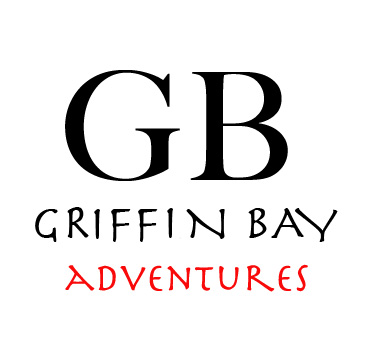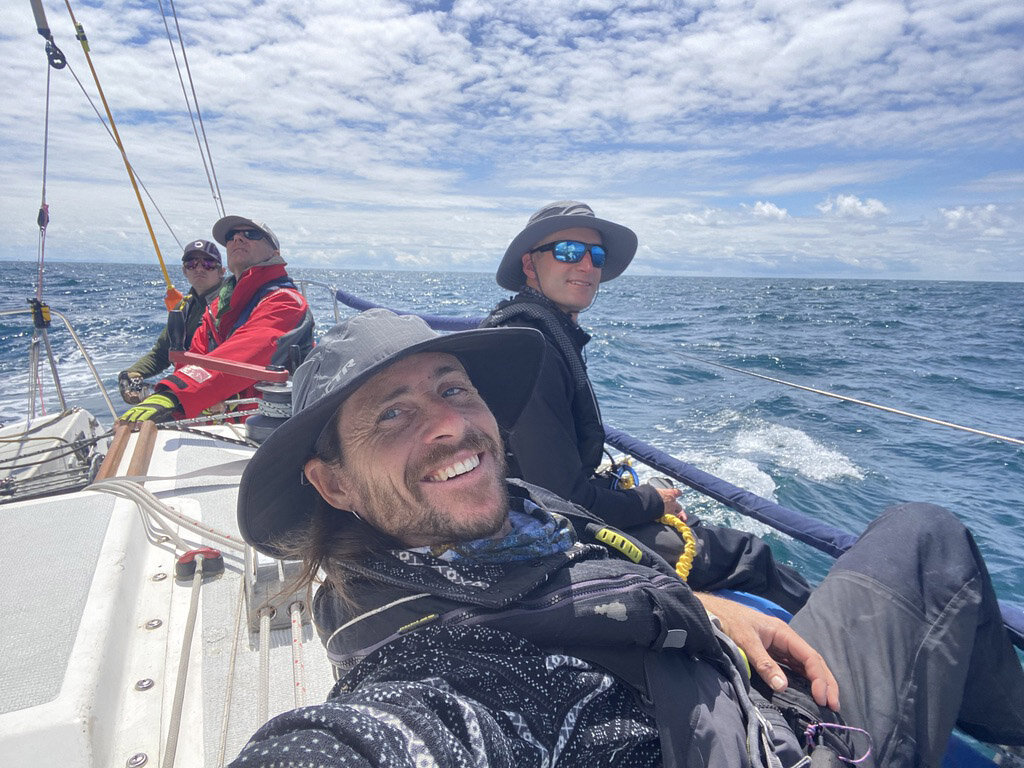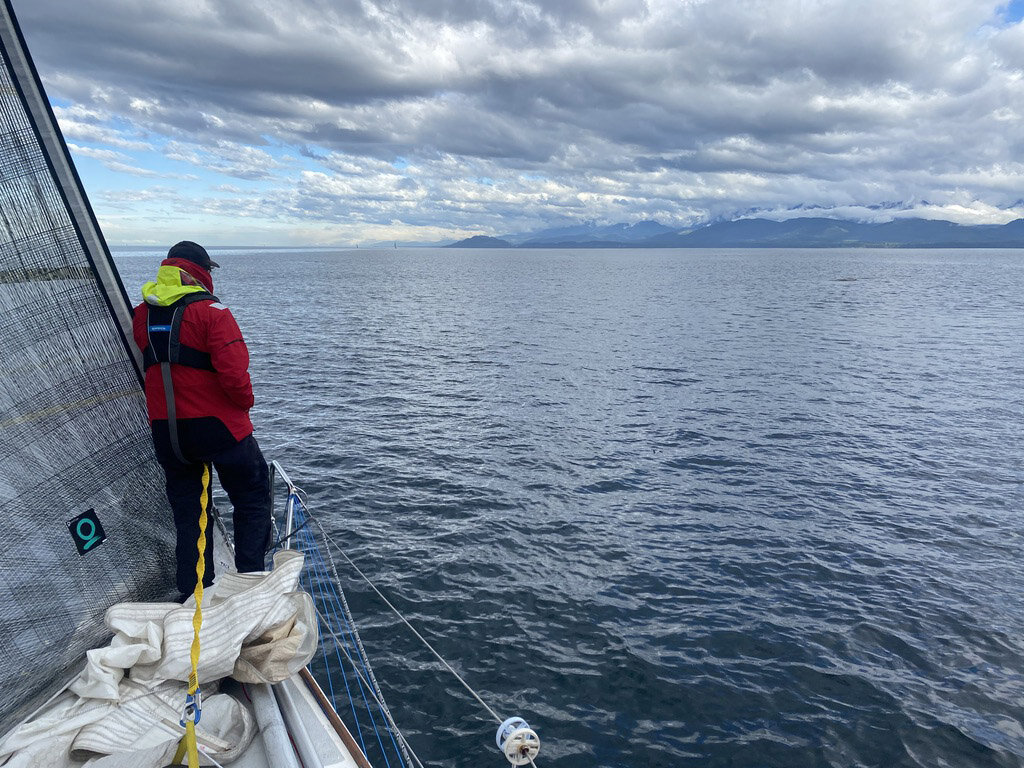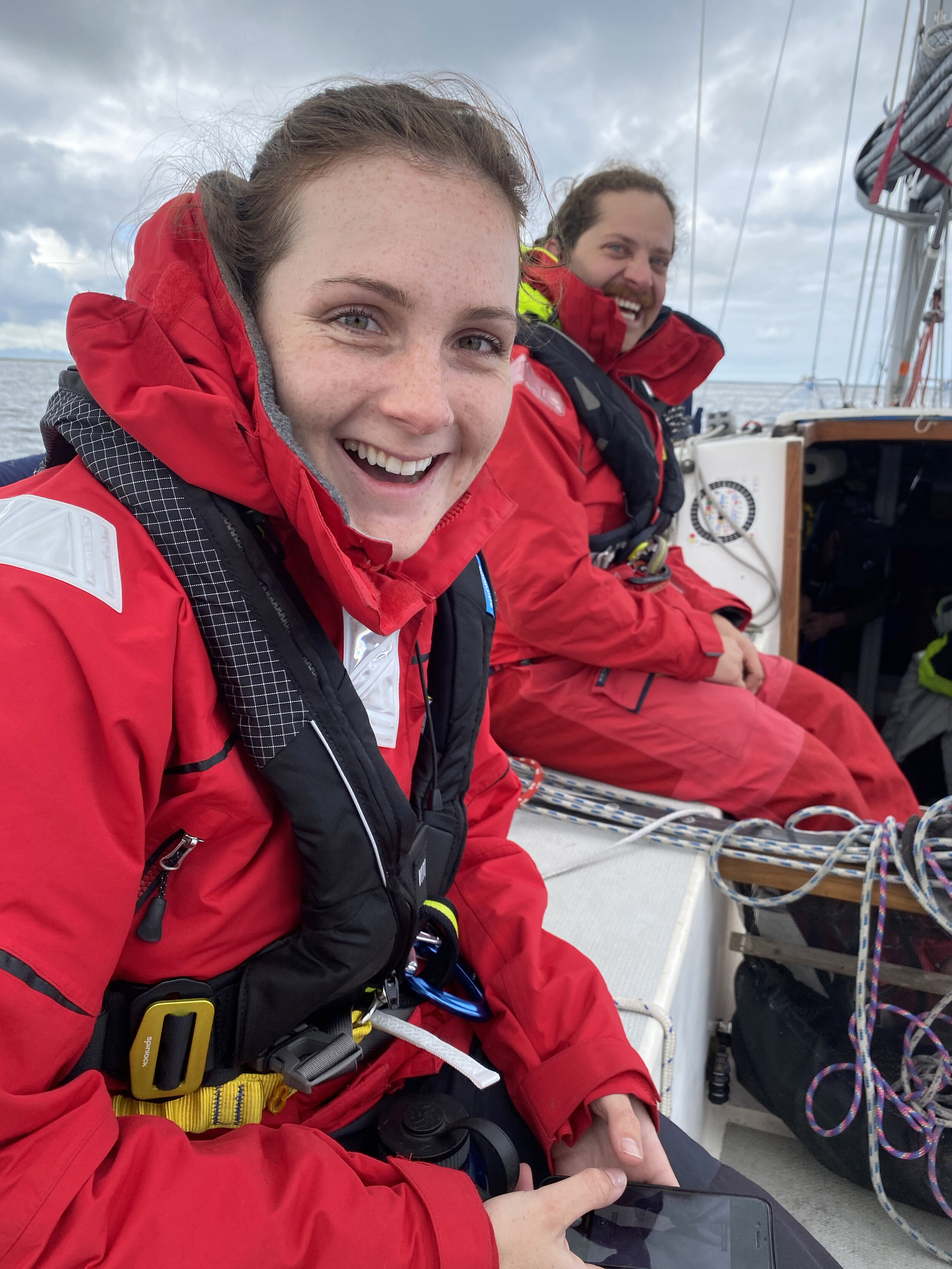Sometimes you have to go backward…
As the work in the yard came to a finish the forecast for this year’s PNW Offshore race began to come into focus. Last month we had been vigorously taking apart and diligently resembling my 1986 Soverel 33. She now had new deadlights, foredeck hatch, anodized spreaders, paint on the mast, oil on her wood, wax and paint on her hull, a polished prop, a new water pump, and rebuilt starboard chainplate deck. The forecast was anticipating gale-force winds from the south by the time we were going to be approaching the most NorthWestern point of the United States and Washington. This wind combined with the fetch from the south and prevailing Northwest bode well for bounciness. Sailing is a Watersport after all and we were confident in our boat having taken everything apart. The only unfortunate thing was that the crew had only 4 of the original 8 we had planned to do the race with making it a crew of half substitute sailors who had never sailed together. Two crew left the program the day before the race so we had our work cut out for us but there was no doubt in my mind that despite the 30+ knots in the forecast we had nothing to worry about. Sailboat racing is a game just like other sports and you play differently based on the hand you are dealt. The propensity of the boat; the advantages and disadvantages of its design, the strengths and weaknesses of the crew, and the conditions on the course all go into the approach.
Fortunately, a forecast is just a forecast and after 24 hours of beautiful surfing in nothing over 25 we were approaching Cape Flattery and the halfway mark having seen 14 knots of boat speed and under total control through the night. Asymmetrical kites set on the pole are such a solid option for offshore wavey conditions.
Great shot of the start by Maria Swearingen
Now for the hard part.
We were now pointing our bow into the greatly diminished wind in the lee one the Northern Cascades and a healthy ebb. We were fighting to see over 3 knots of speed over ground and we could see the J 105s in our division tacking up the shore as they hunted for current relief along the weedy shore. This seemed the best course as the boats out in the middle and just south of the now restricted Canadian border showed no heeling and therefore wind and giving the very light and variable forecast there was a chance that if they lost all wind and steerageway they may be pushed across the border or worse; find themselves in front of a very unmaneuverable tanker going 20 knots. Ether of these would result in disqualification. Some ocean racing rules have penalties for sailing in shipping lanes for this reason. We were going to have to tack up the shore and it was starting to rain.
Two watches later and I come up on deck to find a good portion of the fleet had sailed by us and we were at risk of a dodger boat rolling us (see “dodger boat”). I asked my first mate Martin Gibson what had happened and he said they sailed into a kelp patch and had taken a while to remove the kelp from the rudder. After a few moments on the helm, I felt a small wobble on the tiller and said I thought there was still something on it, to which Marty insisted that they had removed it all. One more “rolling” by a slower boat later we backed the boat down and as we were sailing in reverse and a huge ball of kelp came off the running gear. We were back in it and all we could do was hope our competition would run out of what little wind remained and allow us to catch back up. Too much distance had been lost however and after a valiant and long night of just over 1 knot SOG and a three-hour watch with as many spinnaker hoists and we were clawing our way around the spit and under spinnaker ghosting in, out of the current and in the sun again.
A very tired crew receives the famous hot towel and Champaign and bathroom key.
Well done everyone that showed up. Next time!







